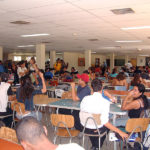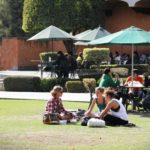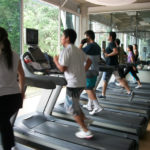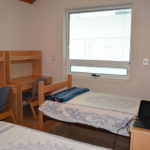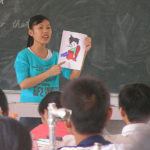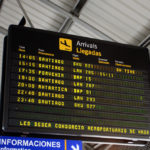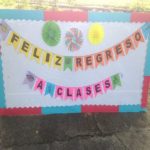5.37: Putting It Together: ¿Qué clases tomas?
- Page ID
- 50152
Click on each link below for a review summary to help you complete the assignments and prepare for the quiz to demonstrate your mastery of the objectives.
[reveal-answer q=”565429″]Recognize and identify locations and courses at the university[/reveal-answer]
[hidden-answer a=”565429″]
 Cursos de la universidad
Cursos de la universidad

![]() Las artes escénicas (Performing Arts)
Las artes escénicas (Performing Arts)

![]() Las ciencias políticas (Political science)
Las ciencias políticas (Political science)

![]() Las ciencias sociales (Social Sciences)
Las ciencias sociales (Social Sciences)

![]() La comunicación (Communications)
La comunicación (Communications)

![]() La criminología (Criminal justice)
La criminología (Criminal justice)

![]() La educación física (Physical Education)
La educación física (Physical Education)

![]() La educación primaria (Elementary education)
La educación primaria (Elementary education)

![]() La historia de la música (Music History)
La historia de la música (Music History)

![]() La informática (Computer science)
La informática (Computer science)

![]() El márketing,
El márketing, ![]() la mercadotecnia (Marketing)
la mercadotecnia (Marketing)

![]() Las profesiones médicas y de salud (Medical and health professions)
Las profesiones médicas y de salud (Medical and health professions)
[/hidden-answer]
[reveal-answer q=”537016″]Use verbs in the present tense that end in –ar to describe everyday activities[/reveal-answer]
[hidden-answer a=”537016″]
Regular verbs ending in –AR are conjugated in the present tense by removing the -AR infinitive ending and adding one of the following personal endings:
| Regular -ar Verbs | ||
|---|---|---|
| Singular | Plural | |
| First | (yo) -o | (nosotros) -amos |
| Second | (tú) -as | (vosotros) -áis * |
| Third | (él / ella / usted) -a | (ellos / ellas / ustedes) -an |
Otros verbos regulares con –AR:
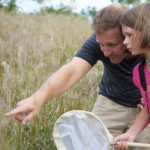



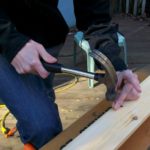
[/hidden-answer]
[reveal-answer q=”121174″]Ask and answer questions with ¿qué? and ¿cuál?[/reveal-answer]
[hidden-answer a=”121174″]
¿Qué? literally means “what?”, and its usage in Spanish is very similar to English. Spanish has two words to ask “which?”, depending on whether the answer is anticipated to be singular ¿cuál?, or plural (¿cuáles?). As when asking “which?” in English, ¿cuál? asks for an answer from among a more or less limited number of options.
- Interrogatives have written accent marks which help distinguish them from the same words used as relative pronouns or conjunctions.:
- Cuál has singular and plural forms:
- ¿Cuál te gusta? (Which one do you like?)
- ¿Cuáles te gustan? (Which ones do you like?)
- As in English, interrogatives normally come at the beginning of the question or the part of a sentence in which information is sought. Be sure to include the upside down question mark at the point where the question begins:
[/hidden-answer]
[reveal-answer q=”706111″]Identify months, days, and seasons[/reveal-answer]
[hidden-answer a=”706111″]
Palabras útiles
hoy (today)
![]() ¿Qué día es hoy?
¿Qué día es hoy?![]() Hoy es … (today is)
Hoy es … (today is)
![]() ayer (yesterday)
ayer (yesterday)![]() anteayer (the day before yesterday)
anteayer (the day before yesterday)![]() mañana (tomorrow)
mañana (tomorrow)![]() pasado mañana (the day after tomorrow)
pasado mañana (the day after tomorrow)![]() en tres días (in three days)
en tres días (in three days)![]() que viene (next)
que viene (next)
![]() el lunes que viene = next Monday
el lunes que viene = next Monday
![]() Los sábados siempre nadamos. (on Saturdays we always swim.)
Los sábados siempre nadamos. (on Saturdays we always swim.)
[/hidden-answer]
[reveal-answer q=”152878″]Tell the date[/reveal-answer]
[hidden-answer a=”152878″]
The verb ser is used to give dates:
Carmen: ![]() ¿Cuál es la fecha de hoy? (What is today’s date?)
¿Cuál es la fecha de hoy? (What is today’s date?)
Ramón: ![]() Hoy es el 20 de mayo. (Today is the 20th of May.)
Hoy es el 20 de mayo. (Today is the 20th of May.)
Carmen: ![]() ¿Qué día es hoy? (What day is today?)
¿Qué día es hoy? (What day is today?)
Ramón: ![]() Hoy es miércoles el 20 de mayo. (Today is Wednesday, the 20th of May.)
Hoy es miércoles el 20 de mayo. (Today is Wednesday, the 20th of May.)
Carmen: ![]() ¿Cuándo es su cumpleaños? (When is your birthday?)
¿Cuándo es su cumpleaños? (When is your birthday?)
Ramón: ![]() Es el 16 de diciembre. (It’s the 16th of December.)
Es el 16 de diciembre. (It’s the 16th of December.)
So if the question is ¿Cuál es la fecha?, the answer can be expressed: Es el + number + de + month
[/hidden-answer]
[reveal-answer q=”756839″]Form numbers up to 100[/reveal-answer]
[hidden-answer a=”756839″]
[/hidden-answer]
[reveal-answer q=”242817″]Use numbers and time-related vocabulary to tell time[/reveal-answer]
[hidden-answer a=”242817″]
Time is constructed using the following structure:
Es la/ Son las + (hora) + y/menos + (minutos) + de la mañana/ de la tarde/ de la noche
2:10 a.m. –> ![]() Son las dos y diez de la mañana. (It is two ten in the morning.)
Son las dos y diez de la mañana. (It is two ten in the morning.)
The word hora is feminine in Spanish, and that is why we use the article la/las when referring to time. Now note that there are certain times that commonly use fractions of an hour instead of minutes, and certain hours have special names:
¿Qué hora es?
5:00 –> ![]() Son las cinco en punto. (It’s five o’clock sharp / on the dot.)
Son las cinco en punto. (It’s five o’clock sharp / on the dot.)
3:15 –> ![]() Son las tres y cuarto. (It’s a quarter past three. – i.e. three fifteen)
Son las tres y cuarto. (It’s a quarter past three. – i.e. three fifteen)
4:30 –> ![]() Son las cuatro y media. (It’s half past four. – i.e. four thirty)
Son las cuatro y media. (It’s half past four. – i.e. four thirty)
1:40 –> ![]() Son las dos menos veinte.*(It’s twenty to/of two. – i.e. one forty)
Son las dos menos veinte.*(It’s twenty to/of two. – i.e. one forty)
6:50 –> ![]() Son diez para las siete* (It’s ten to seven– more common in Latin America)
Son diez para las siete* (It’s ten to seven– more common in Latin America)
1:00 –> ![]() Es la una.** (It’s one o’clock.)
Es la una.** (It’s one o’clock.)
12:00 am –> ![]() Es medianoche / Es la medianoche. (It’s midnight.)
Es medianoche / Es la medianoche. (It’s midnight.)
12:00 pm –> ![]() Es mediodía / Es el mediodía. (It’s noon / midday.)
Es mediodía / Es el mediodía. (It’s noon / midday.)
* Note that once the time passes the 30-minute mark, we generally go up to the next hour and subtract the number of minutes before that hour.
** Son means “they are”, so son las… only works for numbers greater than one. To say “it’s one o’clock”, you have to say ![]() Es la una (or
Es la una (or ![]() Es la una en punto).
Es la una en punto).
The question ![]() ¿Qué hora es? is used when we want to find out what time it is right now. However, if we want to know at what time something is, the question is ¿A qué hora es…? (At what time is… / When is ..?)
¿Qué hora es? is used when we want to find out what time it is right now. However, if we want to know at what time something is, the question is ¿A qué hora es…? (At what time is… / When is ..?)
[/hidden-answer]
[reveal-answer q=”708663″]Recognize and understand the use of the irregular verbs tener and venir”[/reveal-answer]
[hidden-answer a=”708663″]
The verbs tener (to have) and venir (to come) are special in the sense that they have an irregular yo form and also have a change of e>ie in their stem.
The verb tener doesn’t just mean “to have” in the sense of possession: it is also used when we try to convey something that we have to do, following the structure: tener + que + infinitive.
![]() Este semestre tengo que estudiar mucho. (This semester I have to study a lot.)
Este semestre tengo que estudiar mucho. (This semester I have to study a lot.)
The verb venir means “to come”, and it has the same irregularities as tener when conjugated in the present tense. But it doesn’t have so many idiomatic uses!
[/hidden-answer]
[reveal-answer q=”501512″]Learn about some universities in the Spanish-speaking world[/reveal-answer]
[hidden-answer a=”501512″]
See the Cultura section in the Study Plan for these activities.
[/hidden-answer]




